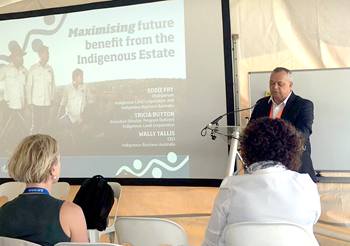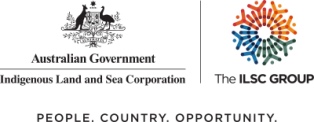
The theme of this conference, Our Land is our Birth Right – MABO25 & Beyond, is a call to action to us all. To me that call is loud and clear. We must move from a circumstance where Indigenous Australians speak of being ‘land rich, dirt poor’ to one where the potential of the Indigenous Estate is realised for the benefit of Indigenous Australians and linked to the broader Australian economy. This is the step into the beyond and, in my view, it is the challenge of the Mabo legacy.
“Land rich, dirt poor” has been an observation reflecting the reality of unrealised wealth in the face of a vast property estate for too long. The source of this paradox is the, under-utilised economic value of the Indigenous Estate, and the type of land it comprises; ‘marginal, dispersed, commercially underdeveloped’. Consequently, the Indigenous Estate has been imagined as not being economically valuable or influential.
At last year’s Native Title Conference, and further in a KPMG publication “Unlocking the Potential of the Indigenous Estate”, I addressed the foundational steps that I believe need to be taken to assist the Indigenous Estate reach its full potential. These included:
- Partnerships to address the persistent inefficiencies that exist: from barriers to entry, insufficient competition, cumbersome administrative barriers, weak institutions and poor policies.
- The development of clear, long-term policies to attract sufficient private sector investment.
These are largely contingent on external engagement and form the operating environment for the Indigenous Estate. But, there is much to be done within the Estate to realise the vast potential it holds. To drive the prosperity of Indigenous Australians, we must look to:
(i) Position the Estate so that strategic and informed choices about economic and other development opportunities can be made; and,
(ii) establish the systems and structures across the Indigenous Estate to enable its assets to be leveraged to take advantage of opportunities as they emerge for Indigenous economic development, including so as to attract investment,
The Indigenous Estate extends across remote, regional and urban Australia and includes both tangible and intangible assets. Tangible assets include things such as land and waters and the resources located on or within them. Intangible assets include things such as cultural and intellectual property rights as they exist in forms of expression (arts, dance, music, language); traditional cultural, environmental and bioscience practices and other forms of traditional knowledge.
The Indigenous Estate is dynamic – it is growing through:
• acquisition, development and management of land
• the flows of funds from royalties and rents from resources
• land use and other agreements, and the investment of those funds – domestically and internationally
• development and growth of Indigenous businesses, and
• the revitalisation, enhancement and intergenerational transfer of intellectual and cultural property and knowledge and new forms of expression and works.
In my speech at the NNTC last year, I drew on the image of the Indigenous Estate, prior to British claim, as a single estate under a complex, country-wide system of land management. Some nearly 230 years on and 25 years after overturning the fiction of Terra Nullius, approximately 40 % of the Australian land mass is held under some form of Indigenous title or agreement.
The rights and control vested by these titles and agreements vary, as does the commercial capability of the land to which they attach. These differences pose a challenge to properly understanding and so fully leveraging the potential of the Indigenous Estate. But, the current situation is no more complex than the traditional systems of ownership and responsibility to country of our forebears. As traditional knowledge systems map the lines of country, we must now take on a project of understanding the contemporary Indigenous Estate. By systematically mapping the Indigenous Estate, we are able to reveal the points of shared values, shared aspirations and shared potential.
Through technology, points of uniformity can be virtually brought together, rendering discrete, marginal parcels of land into an Estate capable of driving Indigenous Australia into a prosperous, globally integrated future. When we re-imagine the Indigenous Estate in this way, it can emerge as a single entity for economic purposes.
For those purposes, it has characteristics in common with any corporate institution. The economic evolution of the Indigenous Estate can take the same pathway as a corporate entity – Transformation, Growth and Consolidation. Using sound consultation, good information, appropriate technology and a clarity of purpose, the Indigenous Estate can become a business asset capable of responding to the demand opportunities emerging around us. As a business asset, the function of the Indigenous Estate would be subject to a framework of continuous performance improvement, a measurement of outcomes and assessment against shared measures of success.
Key to this uniform approach are supporting structures, providing both a backbone function to the business of the Indigenous Estate and acting as a safety net in times of rapid change and hard learning through errors. The ILC and IBA are both undertaking their own processes of continuous improvement to ensure they are fit, equipped and properly structured to meet this challenge.
The combined contributions of the ILC and IBA in helping to maximise the future benefit of the Indigenous Estate are considerable. However, they represent only one part of the many inputs needed into the Indigenous Estate. There are so many other inputs required from key Indigenous organisations, State and Territory Governments and their agencies. And all of these inputs need to be harnessed and co-ordinated.
So, for the last part of the joint presentation today, I would like to focus on what I think is the next key move we need to make in relation to the Indigenous Estate. That is, it is time for Commonwealth, State and territory Governments to talk with us not at us – we must be equal partners sitting at the decision making table. Indigenous people and their organisations must be involved in creating a coordinated economic development framework for our country.
At the moment we have poorly planned arrangements delivered through a patchwork of Commonwealth, State and Territory policies delivered by a myriad of government, Indigenous, private and not-for-profit organisations, each with its own measures of success and aspirations to remain relevant and sustainable.
Unless development of the Indigenous Estate occurs in alignment with the aspirations of Aboriginal and Torres Strait Islander people it will be doomed to fail. Governments and project proponents must fully engage with the Indigenous Estate, its institutions and its people to understand its opportunities. To minimise risk, attract investment and truly engage with the assets and potential of the Indigenous Estate, collaboration is therefore essential.
This is a key message which I will also deliver at the upcoming Developing Northern Australia summit. At that summit I will submit that it is important that leaders of key Indigenous institutions who govern access to and engagement with the Indigenous Estate must be supported to establish a Northern Australia Indigenous Development Committee. This key Indigenous Development Committee would carry out the following functions:
1. identify and communicate opportunity, risks and priorities for land and resource projects on the Indigenous Estate
2. provide advice on identifying pathways for engagement with the Indigenous Estate
3. ensure outcomes are sustainable and directed towards achieving financial sustainability and economic independence for the Indigenous Estate
4. develop partnerships to build capacity and expertise and to link the Indigenous Estate to appropriate expertise and advice
5. advise on infrastructure development and foster collaboration and build a pipeline of priority infrastructure projects, and
6. establish an enabling environment for investment through the development of partnerships, and public/private relationships.
I believe the outline of functions for that committee could be used to underpin a broader consultative committee to consider the future of the whole Indigenous Estate. A coordinated economic development framework and efficient and effective project approval processes are essential to attract investment and support innovative ideas. Those institutions which negotiate on behalf of traditional owners and govern access to the Indigenous Estate must be supported to establish governance structures and processes that are sufficiently agile to participate effectively in economic and investment activity, while also reflecting cultural and community needs and expectations.
To achieve truly beneficial arrangements, these institutions must also learn the power of partnerships to develop commercial capability so that informed strategic investment and commercial decisions can be made and to assist access capital and advice from partners who can work effectively alongside Aboriginal and Torres Strait Islander people. Effective partnerships like this will feed back into the development of commercial capability within the Indigenous Estate.

